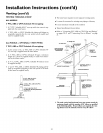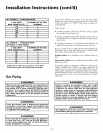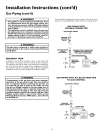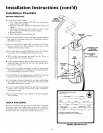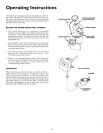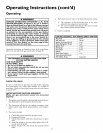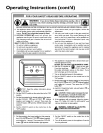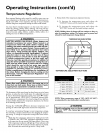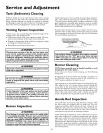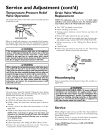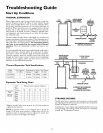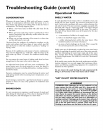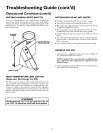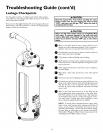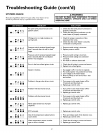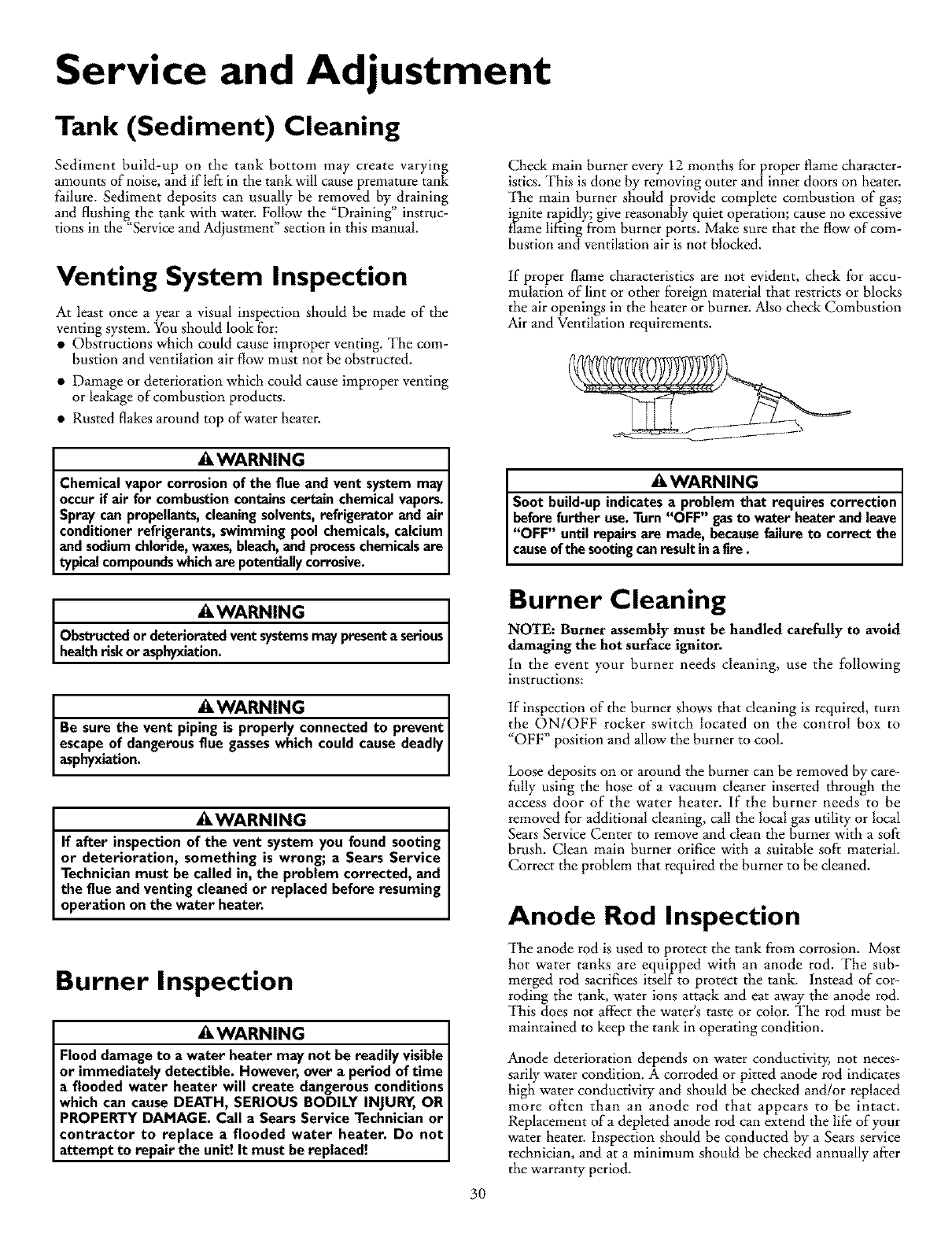
Service and Adjustment
Tank (Sediment) Cleaning
Sediment build-up on the tank bottom may create varying
amounts of noise, and if left in the tank will cause premature tank
failure. Sediment deposits can usually be removed by draining
and flushing the tank with water. Follow the "Draining" instruc-
tions in the "Service and Adjustment" section in this manual.
Venting System Inspection
At least once a year a visual inspection should be made of the
venting system. You should look for:
• Obstructions which could cause improper venting. The com-
bustion and ventilation air flow must not be obstructed.
• Damage or deterioration which could cause improper venting
or leakage of combustion products.
• Rusted flakes around top of water heater.
Check main burner every 12 months for proper flame character-
istics. This is done by removing outer and inner doors on heater.
The main burner should provide complete combustion of gas;
ignite rapidly; give reasonably quiet operation; cause no excessive
flame lifting from burner ports. Make sure that the flow of com-
bustion andventilation air is not blocked.
If proper flame characteristics are not evident, check for accu-
mulation of lint or other foreign material that restricts or blocks
the air openings in the heater or burner. Also check Combustion
Air and Ventilation requirements.
AWARNING
Chemical vapor corrosionof the flue and vent systemmay
occur ifair for combustioncontainscertain chemicalvapors.
Spraycanpropellants,cleaningsolvents,refrigerator andair
conditionerrefrigerants, swimmingpool chemicals,calcium
and sodium chloride,waxes,bleach,and processchemicalsare
typicalcompoundswhicharepotentiallycorrosive.
AWARNING I
Soot build-up indicatesa problem that requires correctionI
beforefurther use.Turn"OFF" gasto water heaterand leave
"OFF" until repairs are made, becausefailureto correct the I
causeofthe sootingcanresult ina fire. I
AE,WARNING I
Obstructed or deterioratedventsystemsmaypresenta serious
healthr skor asphyxat on.
AWARNING I
Be sure the vent pipingis properly connected to prevent I
escape of dangerousflue gasseswhich could causedeadly
asphyxat on.
AWARNING
If after inspectionof the vent system you found sooting
or deterioration, something is wrong; a Sears Service
Technicianmust be calledin, the problem corrected, and
the flue and venting cleaned or replaced before resuming
operation on the water heater.
Burner Inspection
AWARNING
Flood damageto a water heater may not be readily visible
or immediately detectible. However,over a period oftime
a flooded water heater will create dangerousconditions
which can cause DEATH, SERIOUS BODILY INJURY,OR
PROPERTY DAMAGE. Call a Sears Service Technicianor
contractor to replace a flooded water heater. Do not
attempt to repair the unit! It must bereplaced!
Burner Cleaning
NOTE: Burner assembly must be handled carefully to avoid
damaging the hot surface ignitor.
In the event your burner needs cleaning, use the following
instructions:
If inspection of the burner shows that cleaning is required, turn
the ON/OFF rocker switch located on the control box to
"OFF" position and allow the burner to cool.
Loose deposits on or around the burner can be removed by care-
fully using the hose of a vacuum cleaner inserted through the
access door of the water heater. If the burner needs to be
removed for additional cleaning, call the local gas utility or local
Sears Service Center to remove and clean the burner with a soft
brush. Clean main burner orifice with a suitable soft material.
Correct the problem that required the burner to be cleaned.
30
Anode Rod Inspection
The anode rod is used to protect the tank from corrosion. Most
hot water tanks are equipped with an anode rod. The sub-
merged rod sacrifices itself to protect the tank. Instead of cor-
roding the tank, water ions attack and eat away the anode rod.
This does not aflect the water's taste or color. The rod must be
maintained to keep the tank in operating condition.
Anode deterioration depends on water conductivity, not neces-
sarily water condition. A corroded or pitted anode rod indicates
high water conductivity and should be checked and/or replaced
more often than an anode rod that appears to be intact.
Replacement of a depleted anode rod can extend the life of your
water heater. Inspection should be conducted by a Sears service
technician, and at a minimum should be checked annually after
the warranty period.



